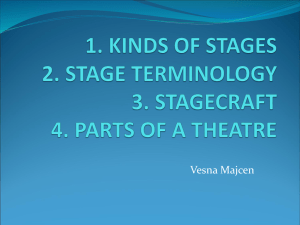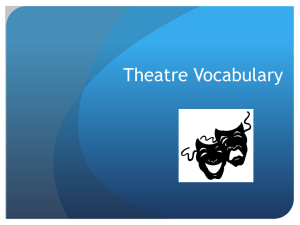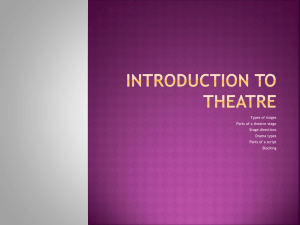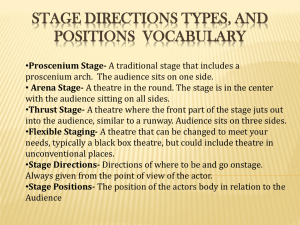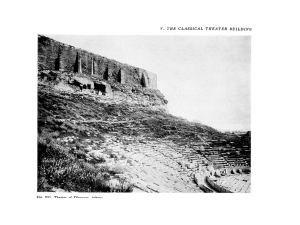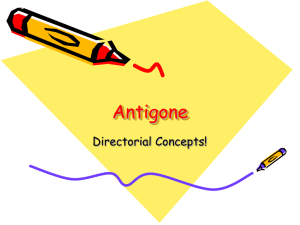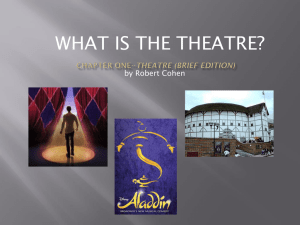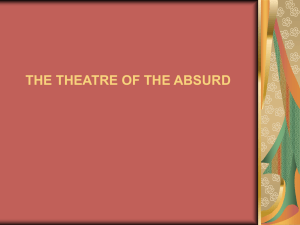Theatre Places and People PowerPoint
advertisement
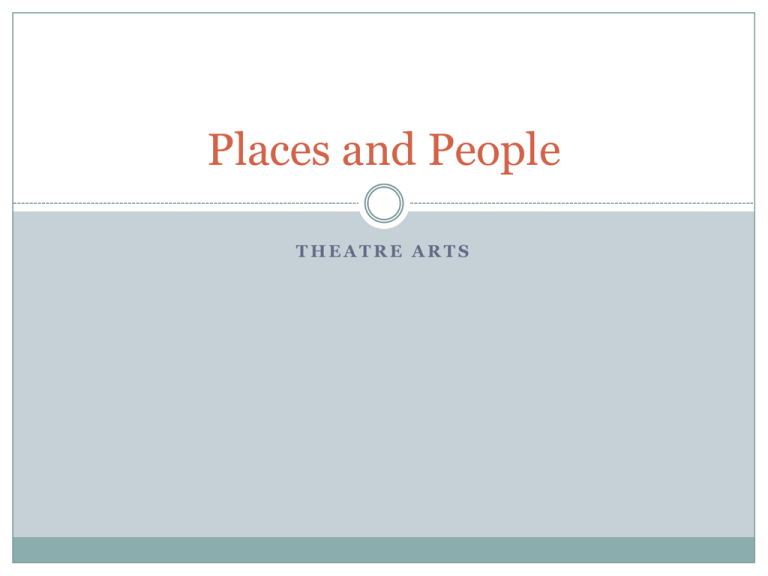
Places and People THEATRE ARTS Stage Terminology Stage – the area of the theatre where the performance takes place Backstage – the stage area that is hidden from the audience; usually contains set pieces and crew Wings – the backstage areas to the sides of the stage Apron – the area of the stage directly downstage from the proscenium arch; generally in front of or on top of the orchestra pit House - the part of the theatre where the audience sits Proscenium Theatre The proscenium arch forms a portal which divides the stage from the audience The audience directly faces the stage The stage is usually elevated Burnsville Performing Arts Center Thrust Stage Stage protrudes out into the audience Audience is located on three sides of the thrust stage Sometimes includes a proscenium arch University of North Carolina - Greensboro North Central College Theatre In The Round AKA – Arena Theatre The stage is surrounded on all sides by the audience Actors enter/exit through passages called vomitoriums or voms University of North Carolina - Greensboro Black Box Theatre A typically small and very versatile performance space Seating can be arranged in any configuration The Christman Company University of South Florida Stage Directions The directions used by the actors to help them navigate the stage Stage directions are always referenced from the point-of-view of the performers Musical Theater Kids More Theatre Terms Proscenium Arch – the portal that divides the stage from the audience Orchestra Pit – a lowered room in front of the stage where the orchestra sits and plays Control Booth – the room at the back of the house where the stage manager, lighting, and sound technicians operate Vomitorium – an entrance either under or between the audience sections where the actors or audience members enter & exit The Fly System The system of ropes, pulleys, and counterweights designed to raise and lower scenery, soft goods, people, lighting, and sound equipment on and off stage. Theater Bielefeld Schnurboden Theatre Lore Traditionally, it is bad luck to whistle in a theatre. Could pirates be to blame? Well…sort of… Theatre Lore Theatrical fly systems were originally created in the style of ship rigging. Naturally, out-of-work sailors who were familiar with ropes and rigging were the best people to hire to operate the theatrical fly systems. Theatre Personnel Producer – the financier of theatrical productions Director – responsible for casting the play; has on overall artistic vision of the play Stage Manager – runs rehearsals and performances; oversees performers and stage crew Production Manager – oversees designers and builders of the production Company Manager – handles all business transactions of the production Designers – bring the director’s artistic vision to life with lighting, sound, scenery, costumes, props, etc. Performers – actors and musicians who enact the script of the play Theatre Hierarchy Producer Director Stage Manager Company Manager Actors & Musicians Stage Crew, Console Operators Production Manager Designers Master Electrician, Technical Director
